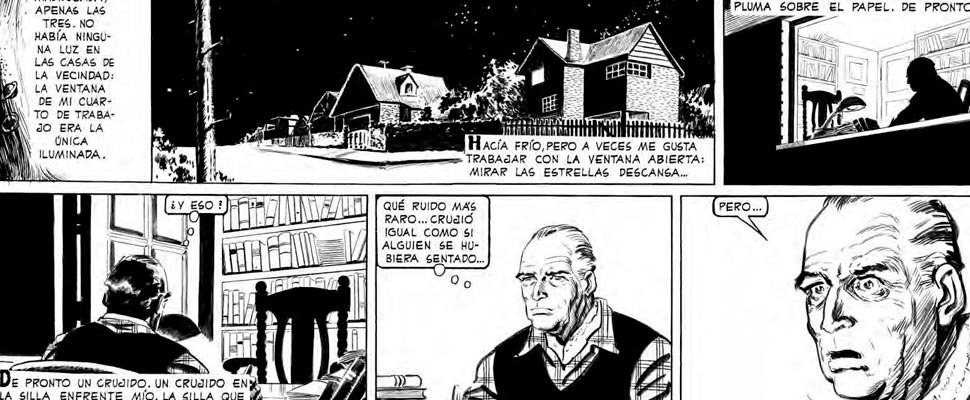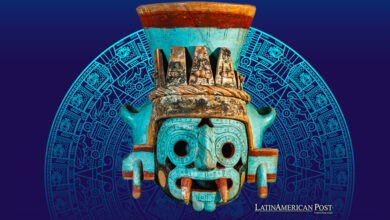Five Latin American comics worldwide known
Because not everything is Marvel, Latin American comic production is also prolific and of high quality

We tell you which are the most important Latin American comics. / Photo: normaeditorial.com
LatinamericanPost| Luis Angel Hernández Liborio
Escucha este artículo
Leer en español: ¿Conocías estos 5 cómics latinoamericanos respetados mundialmente?
The graphic richness of Latin America is observed everywhere, from its great plastic artists, magazines, newspapers, and other media, also cultivating formats such as comics, which are usually more associated with American culture or Japanese manga. Comics in Latin America are not new at all, in each country, there are dozens of famous stories that have become cult classics, we recommend five of them that you will surely like.
This short list is not intended to be exhaustive, therefore there are dozens of comics that will not be present. Instead, here we highlight some of the stories that have crossed territorial and temporal borders becoming true comic book legends in the region, especially because they come out of the mold of the common comic strip.
1. The Eternauta
An authentic classic, its story is as impressive both inside and outside the fiction. Created by Héctor Germán Oesterheld as screenwriter and Francisco Solano López as cartoonist. The Eternauta tells the story of Juan Salvo and the destruction of his world due to a deadly snowfall. Except he visits Oesterheld from the future, who appears as himself in the story, to be warned of what will happen. According to Infobae, its publication dates from 1957, from which time there were sequels and reissues. In addition to its graphic and literary quality, its success was due to its apocalyptic theme immersed in the Cold War, when the danger of nuclear war was constant.
Outside of fiction it was no less interesting, the criticism of El Eternauta towards different global and national issues was not to the liking of the Argentine dictatorship, after which Héctor Germán Oesterheld and his family were killed, the body of the writer was never found. Despite the work of Oesterheld and Solano López, it transcended the passage of time becoming a reference in their country and outside of it, the good news recently is that Netflix will produce a series of this work, according to the same Argentine newspaper.
2. Kaliman
Born on the radio in 1963, Kalimán became a success as a radio novel at a time when television was establishing itself as the most powerful medium. According to the Mexican Ministry of Culture , it was until 1965 when Kalimán made the leap to comics, publishing itself over 26 years without interruption with 1,351 numbers. Its creators, Héctor González Dueñas and Clemente Uribe, endowed the superhero with an elegant personality, who despite being of Indian origin and not representing the national stereotypes of Mexico managed to be a complete success.
Kaliman was a descendant of a deity from Hinduism and was accompanied by Solin, his little helper, and apprentice. The latter was in a way the audience, to whom Kaliman showed the way forward, these lessons emerged from his constant struggles against all kinds of enemies. After ceasing to be published almost permanently, Kalimán has tried to return through different means, although it has not been able to do so continuously.
Also read: 7 works that show the fanaticism of composers for football
3. The sinister Dr. Mortis
Dr. Mortis is one of the landmarks of radio, theater and comics in Chile, an obscure character who could well be the incarnation of the devil or of death itself according to information from the National Radio of Colombia , being able to adapt various forms and to leave his evil mark on everything that has to do with him, including objects. The doctor is not alone, his army of the dead and zombies are the support he needs to interfere in the life of humanity.
Its origin is clear, Juan Bautista Marino Cabello used to listen to narrations of Gothic literature through the London BBC in his childhood, he used this inspiration to create Dr. Mortis who became famous on the radio between 1945 and 1982, eventually arriving to other media such as theater, television, comics and even music. A curious character within the huge range of superheroes that dominates the world of comics.
4. Boogie The Oily
Roberto Fontanarrosa, the legendary Argentine creator, created Boogie the Oily in the 1970s. The character was not of Argentine origin, but American according to Fontanarrosa himself. He is a bloodthirsty man who went through the most difficult training sessions and episodes in Vietnam, as stated by Estado Magazine. Knowing this, it is clear where the story is going, Boogie is a tough character and full of machismo, homophobia, cruelty and racism towards practically everyone. Why create such a character? For Fontanarrosa Boogie was a social criticism, being his wickedness what made him capable of facing the powerful and unscrupulous people of society, which made him an irreverent idol.
Its success and transcendence is such that in 2009 an Argentine-Mexican co-production gave Boogie a life in a film, so El aceitoso continues, especially considering that Fontanarrosa died in 2007 without making clear where Boogie was, nor what he was doing.
5. Selva misteriosa
Last year, the Peruvian newspaper El Comercio highlighted the 45th anniversary of Selva misteriosa , a practically cult comic that would now be reissued in book format by Editorial Planeta, gathering, according to SERVINDI, 759 published and reconstructed strips that have transcended to the XXI century. It was in this newspaper that the story was first published in 1971, the winner of a newspaper contest. The creator was Javier Flórez del Águila and the publisher Jorge Chiarella , who for three and a half years published the story and adventures of Javico in the Peruvian Amazon, a hero with local authenticity.





